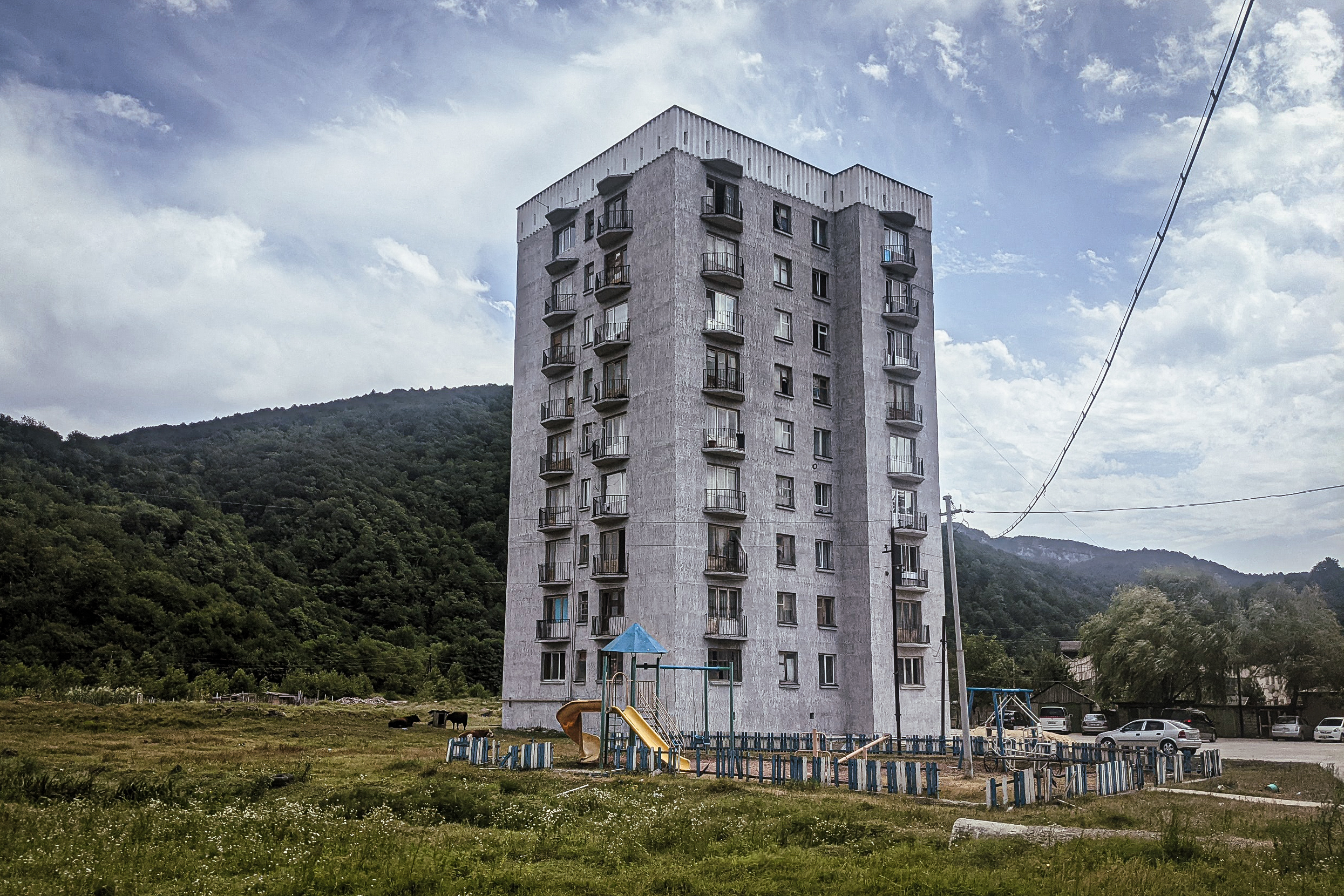
Tkibuli, Tkibuli-Ambrolauri-Kutaisi Hwy
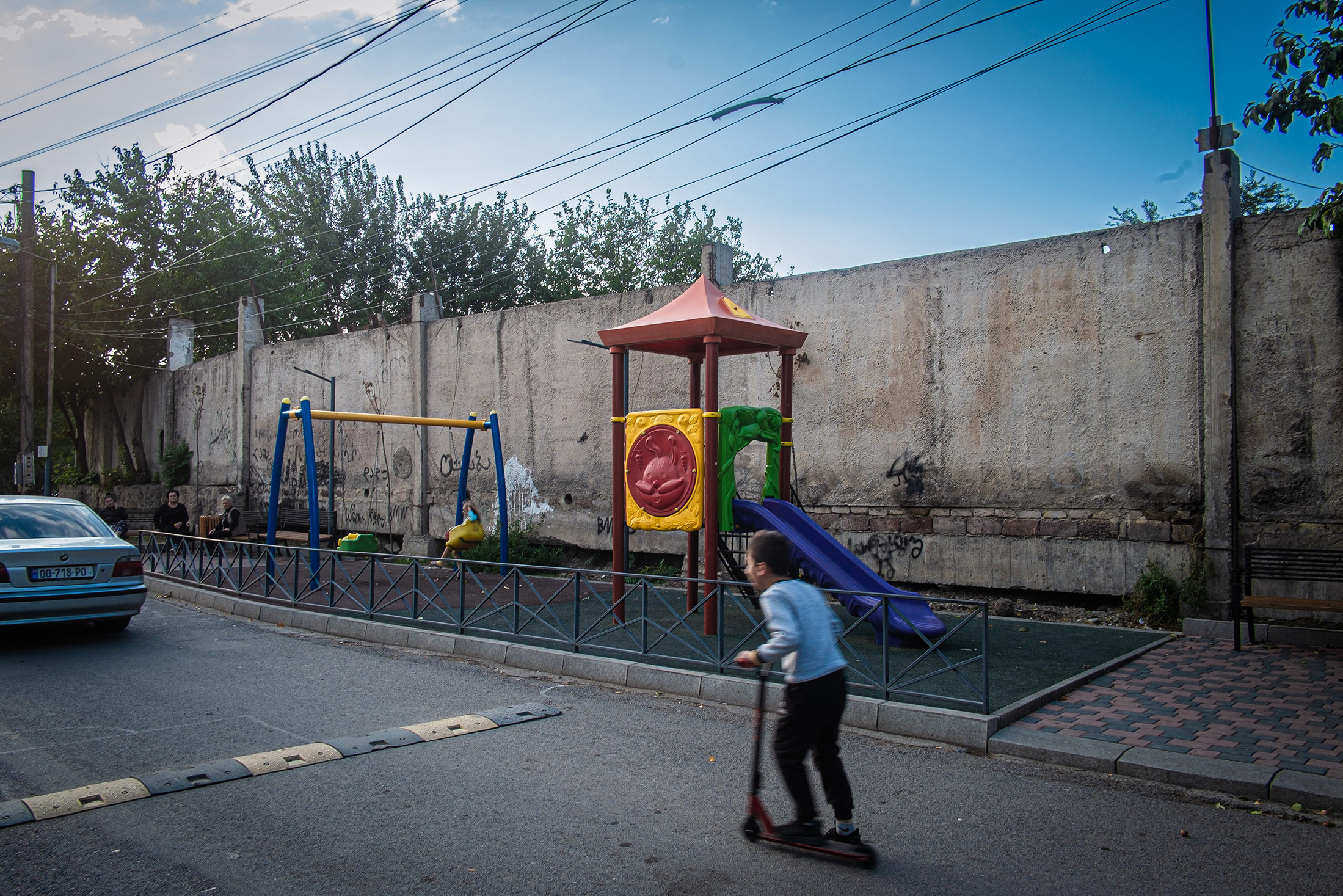
Tbilisi, Isani, Gudarekhi Street
At first glimpse, there is nothing wrong with the playgrounds that dot the yards and green spaces in the Georgian capital, Tbilisi, and other cities. They are colorful and cheerful. But when my son started to walk, I started to realize something was a little off. For instance, some are located where no playground should be, such as near busy highways. The design and the materials used also raise questions.
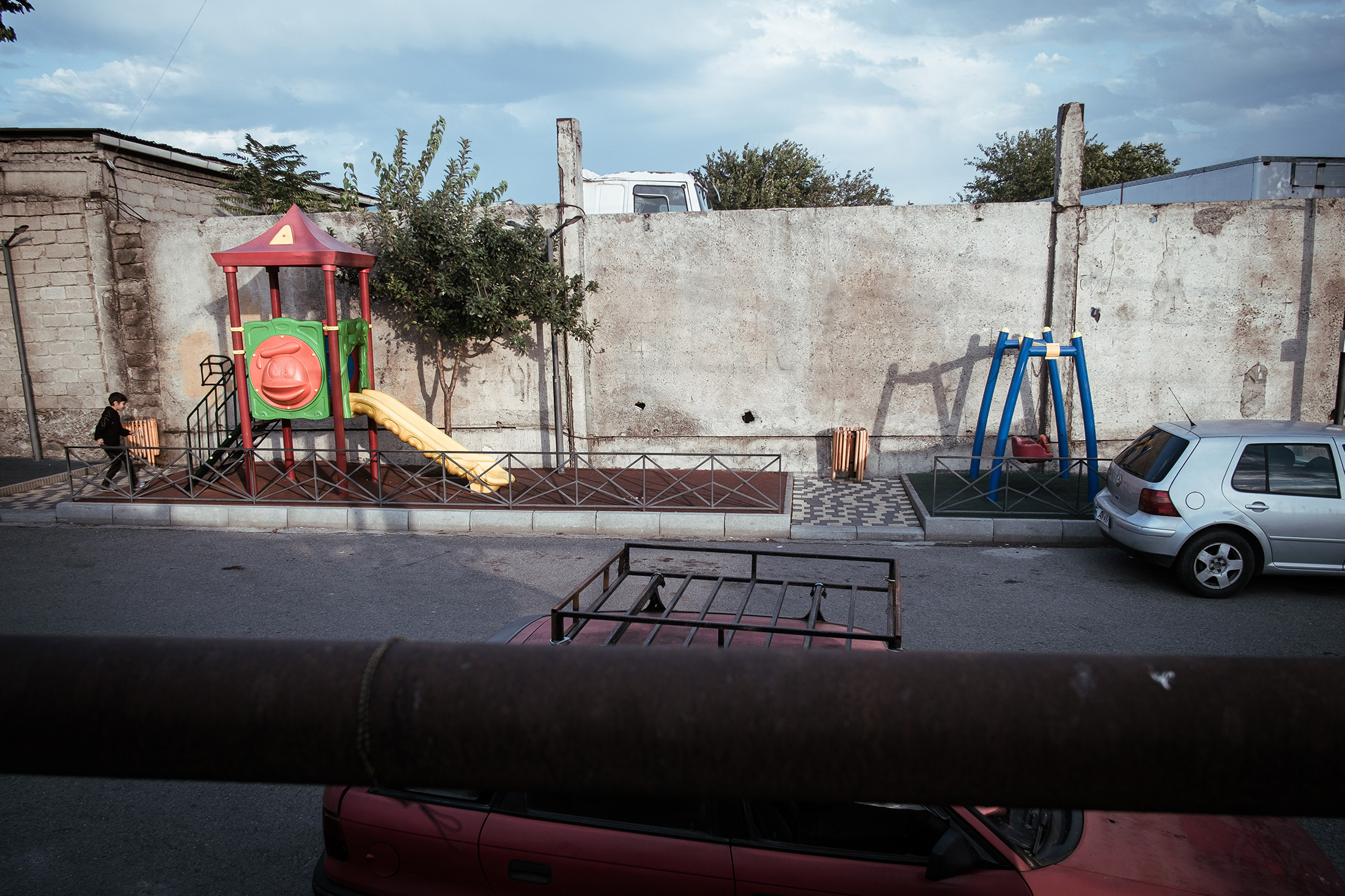
Tbilisi, Isani, Sadakhlo Street
“Playgrounds are as crucial as playing itself is for children's development," Maia Tsiramua, children's psychologist and therapist, says. "It is the first social space for children to have their first social interactions. A playground should be designed to develop fine motor skills, sensory experience, perception of space, and self-confidence by overcoming challenges. It should not offer fixed patterns of play, exactly opposite—it should let the children's imagination unfold."
Unfortunately most playgrounds in Georgia are based on the “fixed playground” concept that was prominent in the 20th century. Its design philosophy is focused on how to reduce height, movement, and hard materials. It is built with cheap plastic or rubber materials and does not include any risks, only fixed types of rides.
Margery Ellen, a British landscape architect and children's welfare advocate, proposed creating junkyard playgrounds for children, later renamed adventure playgrounds. This type of playground is designed to let the kids take more risks in a “controlled” environment. In this context, risk is not the same as hazard. For example, when climbing a tree, a rotten branch is a hazard: the threat is unexpected. But, how high you climb is a risk: it is manageable and requires you to decide actively.
Today, an adventure playground is the new standard internationally, although not in Tbilisi.
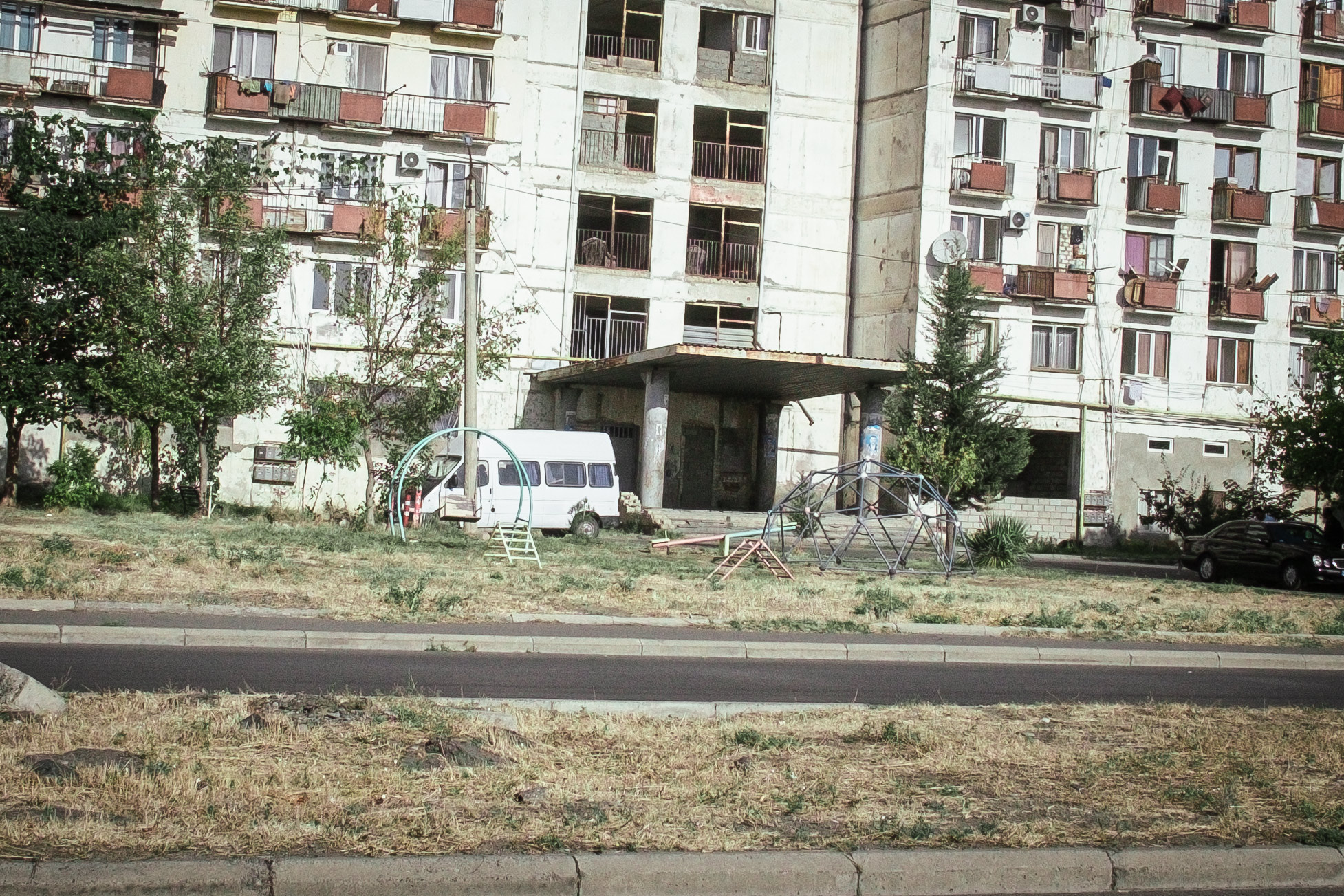
Rustavi, 12th District, Giorgi Eristavi Street
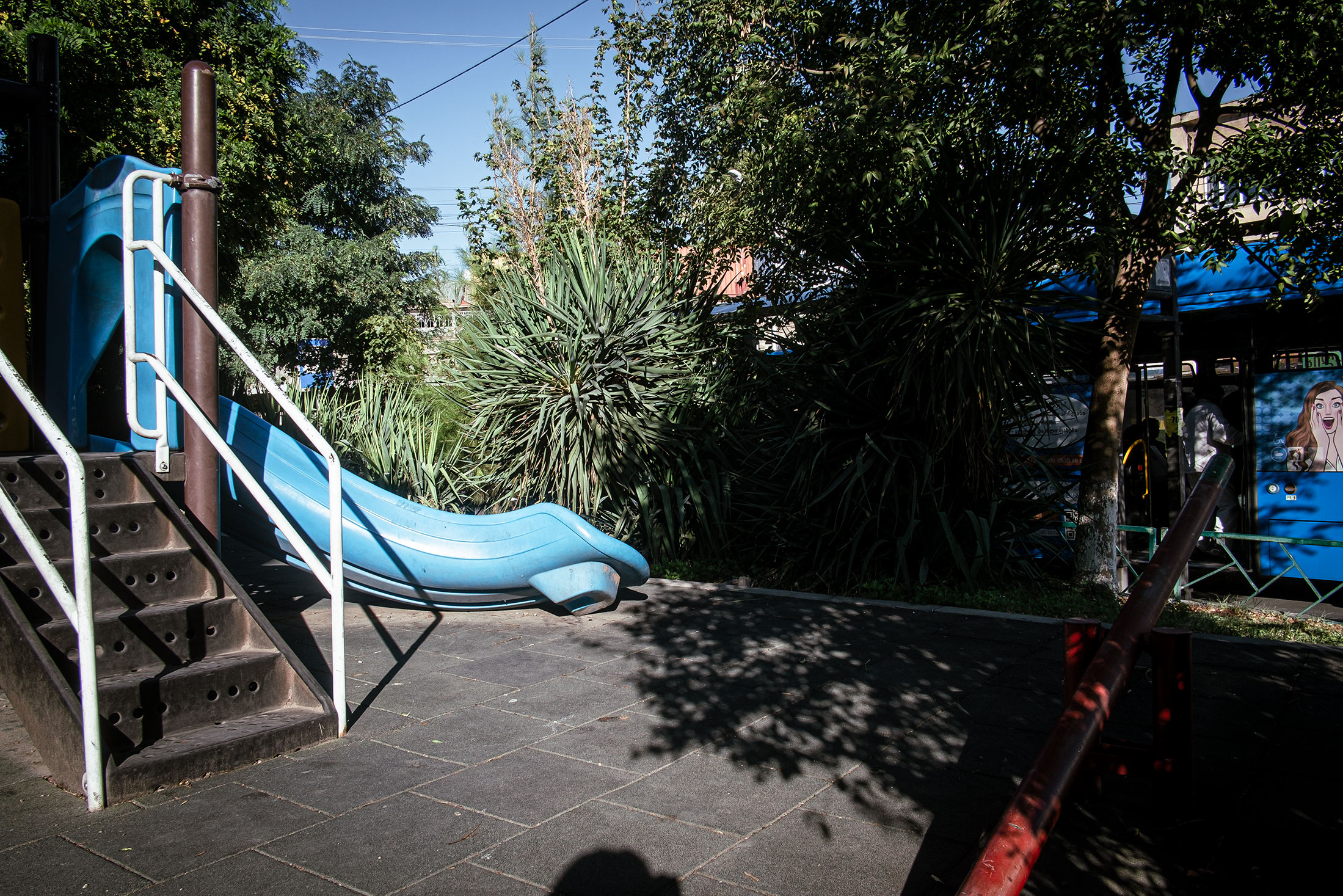
Tbilisi, Malaknebi Squere
Children should be the main priority of our urban planning, of course. There are 1100 playgrounds in the city, and the mayor's office proposes areas for new playgrounds and reviews them with the local community. City Hall lists children’s wellbeing as a priority for urban development and neighborhoods are supposed to be involved when the mayor’s office proposes new playgrounds, according to the current proposal and tender process. But there is little data on how happy—or unhappy—Tbilisi residents are with the playgrounds the city commissions.
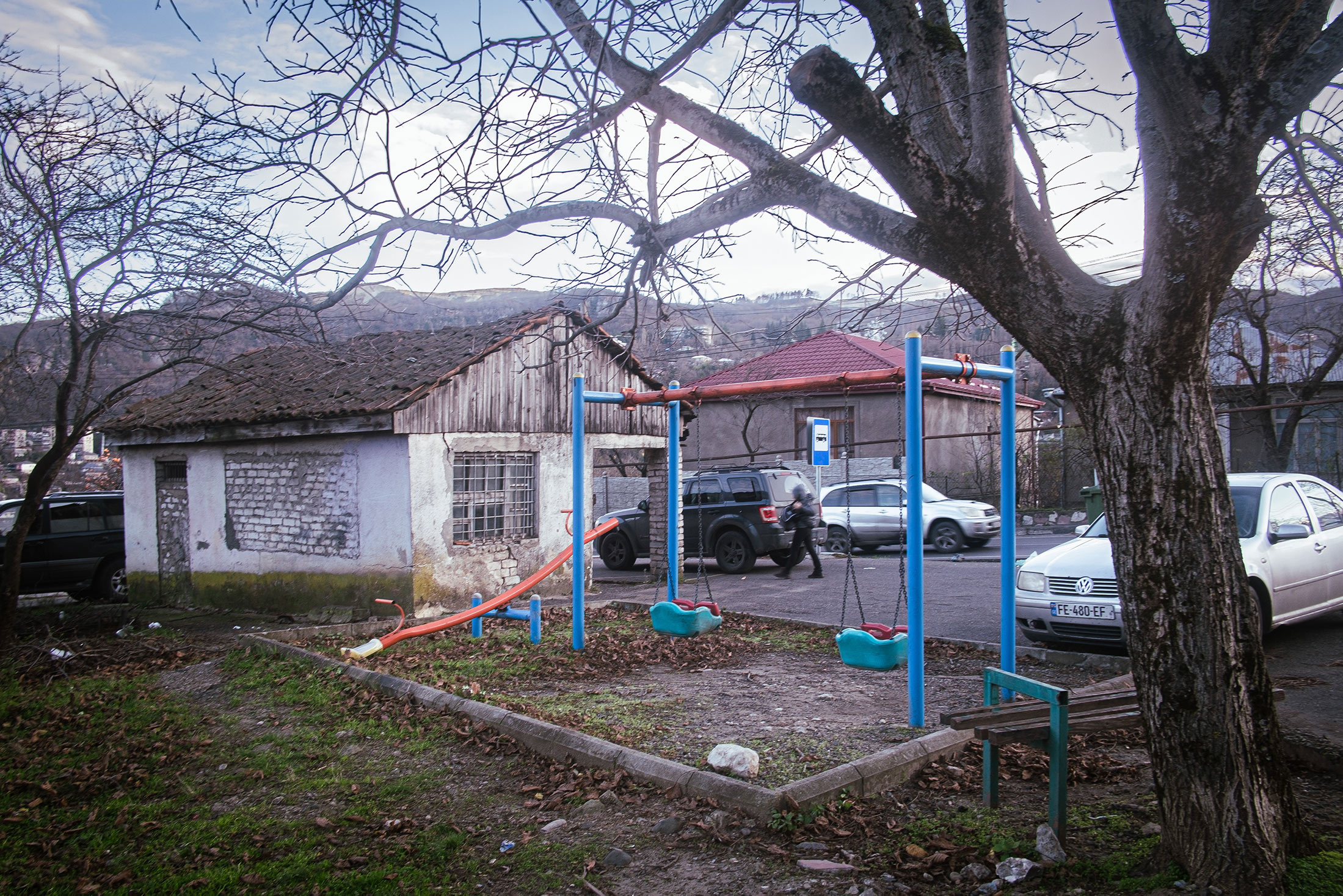
Chiatura, 9 Aprili Street
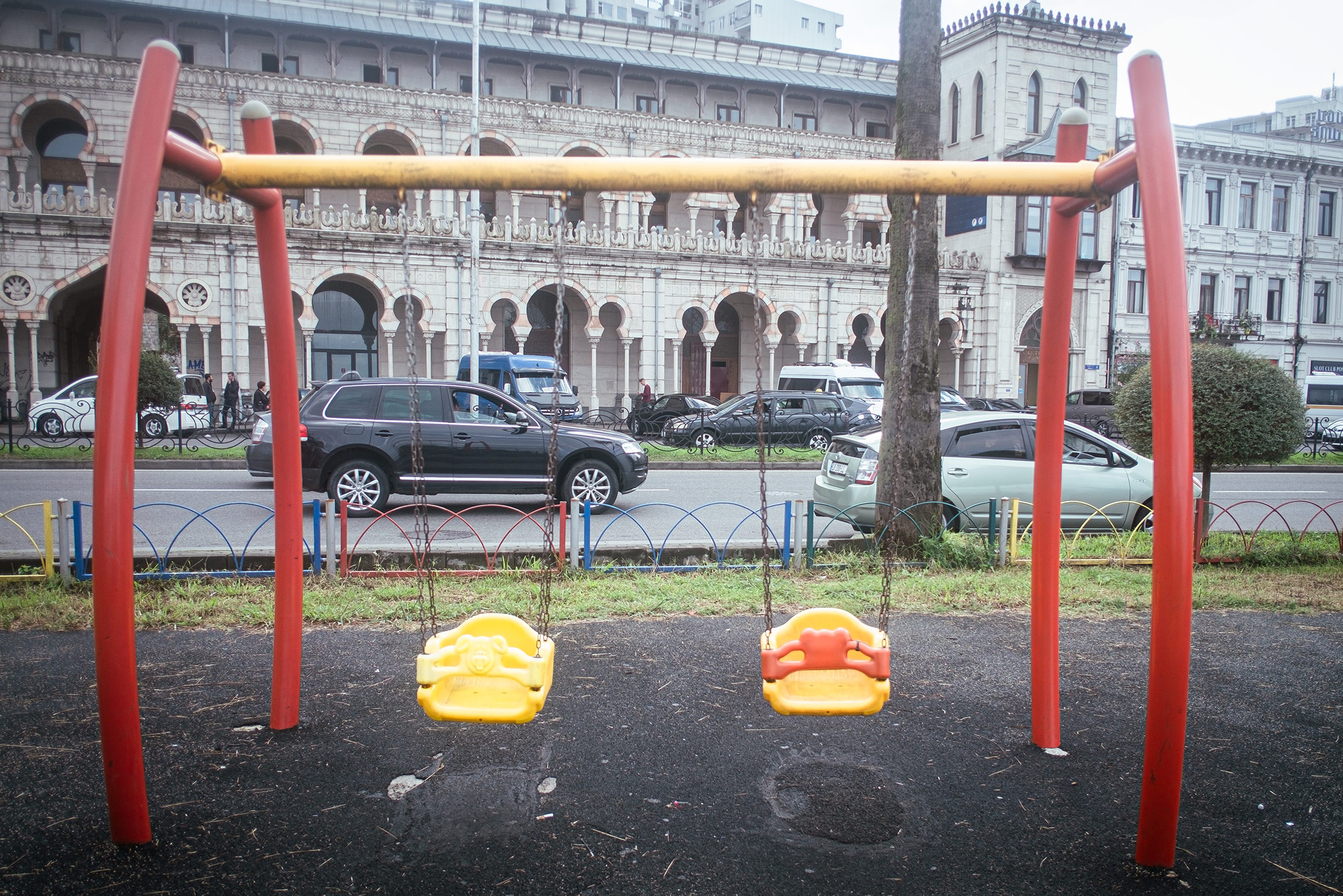
Batumi, Gogebashvili Street
"For now, we do not have any qualitative or quantitative research about what people think about the playgrounds or how happy they are with using them,” the Tbilisi City Hall public information center said.
Irakli Jvania, an architect and urban planner, notes it is more than the equipment used; location is also crucial to creating a safe space for children.
”A location for a playground should be carefully chosen. It should be an essential part of the general urban development plan,” he says. “It should be part of green space and a maximum of 15 minutes’ walk from the settlement. It must not be built in open windy spaces or near the roads. Sun should be available throughout most of the day, but shade should also be available to shelter during the hot summer days.”
Zurab Bakradze, an architect and urban planner, says play space is needed in Tbilisi due to the building craze in the city.
“In Tbilisi, for a long time, the ‘ezo’ (the yard) was where children played. There was no particular need for municipally built playgrounds. The ezo was the half-public, half-private space that functioned as a playground,” he said. “However, the mania of building new residential buildings has significantly diminished the total area and, therefore, the role of the ezo. So the need for built playgrounds has arisen.”
The following photo essay explores the world we have created for our children in Tbilisi and other cities.
This project is part of a series on playgrounds in the South Caucasus. For reports on the situation in Azerbaijan and Armenia, see: Beyond the swings and slides
Finding a place for future citizens
This photo project was produced in the framework of Chai Khana Fellowship program - Summer/Autumn 2022.
The networking event and the mentorship of the fellows was supported by the Federal Foreign Office and the Civil Society Cooperation program, implemented by the Deutsche Gesellschaft e. V.
DONATE NOW

